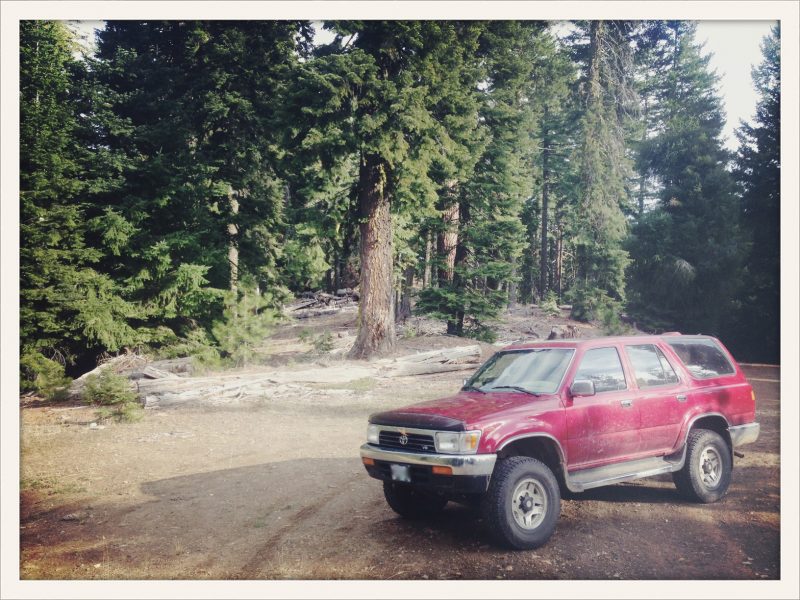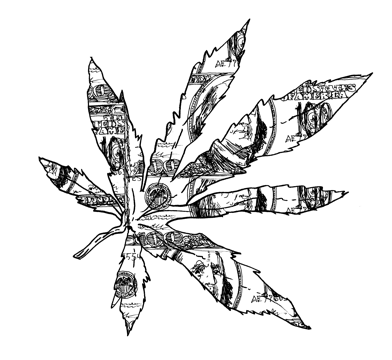The cook, whom I am going to call Dan, was having engine trouble. Fourth gear had gone limp on him, and fifth was unusable. He’d feared this day awhile now, when his aging, sun-beaten Toyota SUV started to break for real. Its previous owner had worn the truck out doing ranch work up north, near Canada, and then sold it to Dan cheap, aftermarket subwoofers included. On that ranch, Dan had plowed grain and mended fences, and after the season he had landed here, in Humboldt County, California, the marijuana-growing capital of America, if not of North America, where twice a day, six days a week, he made meals for trimmers on a big-money marijuana grow. Those trimmers, who neaten raw marijuana buds, nicknamed him “Dreamboat,” and he didn’t object.
It was a placid Sunday in October 2013, the middle of the fall harvest. Dan eased down the Mountain—“what everybody all over the world calls it,” he said, meaning the world of elite marijuana growers and their farmhands—riding neutral when he could, hoping his engine would later have enough kick to get him back up. He was headed into town to buy his farm’s weekly supply of food and drink. His budget, fourteen hundred dollars, all in twenties, sat on the dash, in an envelope labeled “Kitchen.” This allowance would be spread across several stores: restaurant suppliers, a local grocer, consumer wholesalers, and a tobacconist. Dan was a frugal shopper. He didn’t use coupons, but he knew that the price of pork loin was better at Cash & Carry than at WinCo, and that neither sold the brand of sweet butter popular with the trimmers. (That was at Safeway.) His shopping circuit would last into the evening, which was the point. If he returned to the farm before the dinner hour with a pantry of new food, he’d be expected to whip up a dish. And Sunday, contractually, was his day of rest.

Where the farm road met pavement Dan shifted out of four-wheel drive, flicked his spliff out the window. The sheriff’s office, if they were in the mood, could be suspicious of a vehicle simply for driving on the Mountain’s main road, a known high-volume marijuana trade route. Passing a Super Duty truck pulling a horse trailer empty of horses, Dan said that around here it would be surprising if the trailer wasn’t filled with weed. The Mountain, some fifty miles from the Pacific, a summit among low peaks, is passable only via private back road. Those growers who want to keep their shipments of marijuana off public roads as much as possible pay fellow growers, like Ethan, the owner...
You have reached your article limit
Sign up for a digital subscription and continue reading all new issues, plus our entire archives, for just $1.50/month.
Already a subscriber? Sign in





